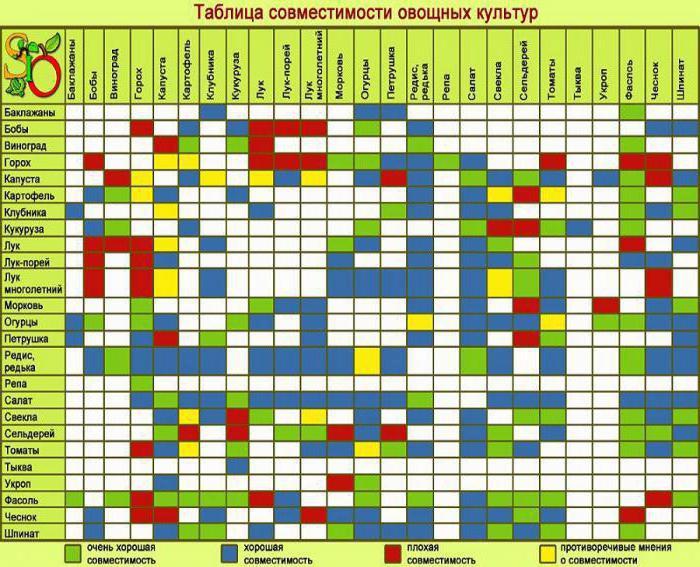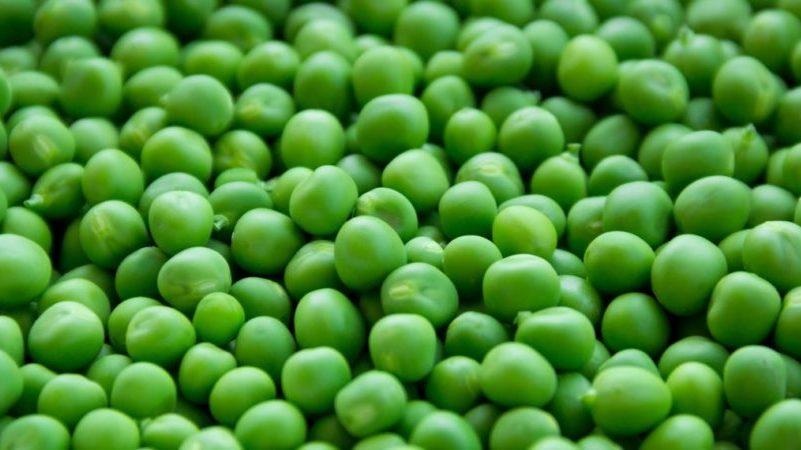Next to which crops is it better to plant peas
When growing various vegetables in the beds, you may notice that some of them give a rich harvest, from some I would like a greater return, while others do not grow at all, despite the efforts made. This is due not only to competent care, but also to cultural compatibility.
Experienced gardeners must take this factor into account. It plays an essential role in protecting plants from disease, and also has a beneficial effect on their growth and flowering.
The content of the article
What is crop compatibility and how does it affect yield
When planting plants, it is important to consider which crops they will coexist with. You also need to know what vegetables have grown in this or that section of the garden before (a year or two before the current season).
Many cultures are incompatible and can oppress each other. For example, cucumbers are suppressed with tomatoes, beans with onions. It is necessary to take into account the size of the plants, the way they grow.
And vice versa: there are examples of a favorable neighborhood between cultures, when they not only do not oppress each other, but also have a beneficial effect:
- peas have a positive effect on potatoes and carrots;
- mustard - for peas;
- potatoes - for beans and corn;
- chicory - on onions;
- onions - for chicory and beets.
Some plants have protective properties. It is known that beets, cabbage, parsley, lettuce, carrots and dill inhibit the development of late blight. Phytoncides of onions, radishes and garlic have a detrimental effect on conidia and phytophthora spores, ascochitis mushroom, causative agents of vascular bacteriosis of cabbage.
Other crops, on the other hand, contribute to the spread of disease. For example, tomato, quinoa, cucumber, cherry, sorrel and pumpkin have a beneficial effect on the development of phytophthora.
There are plants that secrete substances that are harmful to insect pests of other crops. For example, vegetables from the cabbage family are affected by the cabbage fly. In turn, she is afraid of substances secreted by onions.
It is also known that pests can be controlled with the help of insects that parasitize them. For example, a ladybug lays eggs in the body of aphids and feeds on its larvae. To attract a ladybug, dill and tansy are planted. Predatory insects flock to parsnips, which destroy pests.
When the same crops are cultivated in one place for a long time, pathogens of bacterial and fungal diseases can accumulate in the soil, which will affect subsequent crops.
Concerning it is necessary to alternate the grown crops. For example, potatoes and eggplants cannot be planted in the place where tomatoes grew, since they belong to the nightshade family and have the same set of pests and diseases.

It is important to understand what effect a particular crop has on soil fertility. They can be conditionally divided into three groups:
- Very demanding - all types of cabbage and celery.
- Less demanding - most root vegetables.
- Fertility-improving crops are legumes.
Vegetables from the families of nightshade, pumpkin, all types of onions and lettuce, spinach and corn are intermediate between "very" and less demanding.
reference... To avoid depletion of the soil, vegetable crops should be alternated in such a way that all three groups are replaced within three years. The most favorable sequence is as follows: in the first year, the most demanding crops are planted, in the second - legumes (to restore nitrogen reserves), in the third - less demanding.
Considering the compatibility of plants according to different criteria, a mixed planting of vegetables in the garden is formed, which allows you to fight pests and increase yields.
Are peas compatible with other crops
Peas belong to the legume family. It saturates the soil with nitrogen. Also, its roots are able to penetrate deep into the soil and extract nutrients from there. This has a beneficial effect on neighboring plants.
In this regard, it is useful to use peas as an inter-row crop. In this sense, he is a very good neighbor for potatoes. It is enough to sow peas between the rows, and it will additionally saturate the potatoes with the necessary nutrients.
Important! Peas are sensitive to crops that grew in the soil before it. Quite good predecessors: tomatoes, cabbage and potatoes. It is advisable to sow it again in the same place after four years. Also, it can be safely planted after strawberries - provided that all its old bushes are dug up and weeds are removed.
What to plant next to peas
Let's figure out what you can plant peas... The best neighbors for him are: cucumber, carrots, potatoes, radish, corn, herbs, white cabbage, lettuce and spinach. It is believed that they go well with each other.
Sprouting peas among the beds of these crops saturates the earth with nitrogen.

If you plant peas next to corn, then it will also be a wonderful support for him. And spicy herbs mask the location of vegetables with their pungent smell, and it is more difficult for pests to find them.
Can peas be planted next to tomatoes? Tomatoes are individualistic plants, but many successfully combine them with other crops. Their scent helps fight insects. They have a negative attitude to the neighborhood with potatoes, dill, fennel and kohlrabi. Melissa and basil improve the taste of tomatoes, they are neutral to the rest.
Mustard is a real "doctor" for peas, it scares the pea moth from planting... Peas do not like garlic and onions. He does not live very well next to beans and any varieties of beans. It goes well with other vegetables.
Read also:
Conclusion
Peas are not only a tasty and healthy product, but also a wonderful neighbor for the plants they grow next to. When planted correctly in your garden, you will not only save space, but also use its biological features for the benefit of other crops.
With proper planting and plant compatibility, planting and planting can be planned successfully, yields are excellent and chemical use is minimized.